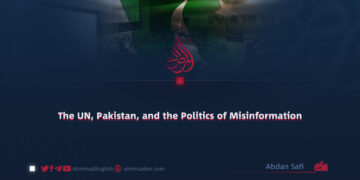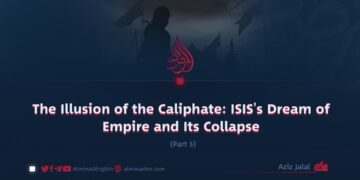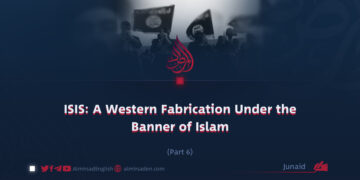Part 1
Soroush Nikseir
The Illusion of the Caliphate: How ISIS Deceived the World
In 2014, the world witnessed the sudden rise of a violent and unprecedented force rapidly disrupting regional and global stability. A militant group calling itself the “Islamic State of Iraq and Syria” (ISIS) swiftly captured vast territories in Iraq and Syria, brazenly declaring the establishment of an “Islamic Caliphate.”
This self-declared caliphate, however, was neither grounded in the collective will of the Muslim Ummah nor founded upon any legitimate historical or religious basis. Rather, it was a brutal regime sustained by terror, mass executions, cultural erasure, and the calculated exploitation of Islamic slogans.
The group disseminated staged videos of public executions, destroyed historical sites, and promoted a distorted image of life under their rule in the name of an Islamic system. This was an attempt to wear the mask of Islam and conceal their repugnant face. But it was all a fabricated illusion and a deceptive fantasy whose true nature was soon exposed.
The Grand Delusions of ISIS
The leadership of ISIS, intoxicated by the dream of reviving a bygone Islamic caliphate, advanced three central claims to assert their legitimacy.
1. Reviving the Islamic Caliphate
Abu Bakr al-Baghdadi, the group’s key leader, arrogantly declared himself the Caliph of Muslims and claimed that ISIS was the only legitimate Islamic government. He justified this claim using extremist and distorted interpretations of Islamic teachings. However, prominent scholars of the Muslim Ummah unanimously rejected this assertion as a blatant falsehood.
2. Rule Attributed to Sharia
ISIS carried out public executions, stonings, and the enslavement of women under the banner of Sharia law. Yet these barbaric practices neither originated from authentic Islamic sources nor aligned with the true principles of Sharia. Instead, they were derived from a deviant and extremist interpretation of religion.
3. An Invincible Force
When ISIS captured cities like Mosul and Raqqa, it projected itself as an unstoppable and perpetually victorious force. Its media exaggerated victories through propaganda while concealing defeats and internal failures.
The Superficial Structure of the Caliphate
To portray legitimacy, the criminals of ISIS established a superficial “state-like” structure:
a. The Shura Council: Comprised of military and religious leaders responsible for major decisions.
b. Provinces: Captured regions were administratively divided and ruled by appointed “governors,” such as in Aleppo and Nineveh.
c. Government Departments: ISIS ostensibly established ministries such as War, Information, and Culture, and municipal services like water and electricity. However, these institutions existed only for appearances and were not intended for the welfare of the people.
This entire framework was nothing more than a theatrical display. It lacked legitimacy, economic stability, and even internal cohesion. Much of the group’s time was spent suppressing dissent within its ranks rather than serving the population.
A Crucial Question: Why Did This System Collapse From Within?
The collapse of ISIS was not solely the result of external military operations. Internal contradictions significantly contributed to its downfall. These include:
1. Reliance on Violence
ISIS ruled through terror and intimidation. This method proved only temporarily effective. As internal resistance grew, even former sympathizers began to distance themselves from the group.
2. Lack of Capable Leadership
Following the death of Abu Bakr al-Baghdadi in 2019, his successors failed to maintain cohesion. Disputes between regional and central commanders weakened the structure. As a result, the so-called caliphate was left without a caliph while supporters clung to a fading illusion.
3. A War-Torn Economy
A functioning economy is essential for sustainable governance. Although ISIS branded itself as an Islamic state, it lacked a viable economic foundation. Its revenue came from looting, illicit oil sales, and extortion. These sources quickly dried up as opposition forces advanced. Without funds, even loyal fighters lost motivation, and the leadership became increasingly isolated.
4. Loss of Territory
With the fall of Mosul in 2017 and Raqqa in 2019, ISIS lost not only its territorial strongholds but also the illusion of an “eternal caliphate.”
Conclusion
History and lived experience affirm that ISIS was never a legitimate state. It was a reviled organization and a terrifying instrument of terrorism. It sustained itself through fear, brutality, and deception. Once those tools lost their effect, the illusion of the caliphate disintegrated, leaving behind only destruction and a cautionary lesson for the Muslim world and beyond. History will not remember ISIS as a caliphate, but as a cautionary tale, a perversion of Islam, and a tragedy for the Muslim world.



















































